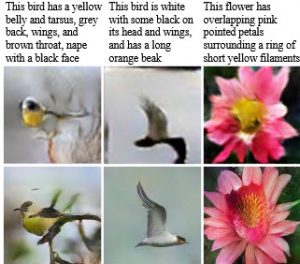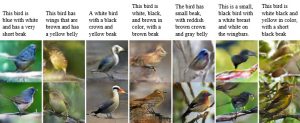 The best method of learning is not linear. It is holographic. Your picture always contains the whole picture… even if it is still fuzzy… so the context is already set. You know where and how things fit in the big picture.
The best method of learning is not linear. It is holographic. Your picture always contains the whole picture… even if it is still fuzzy… so the context is already set. You know where and how things fit in the big picture.
Miko brings up a topic that can lead us to some useful learning practices, a more useful knowledge base, a life with direction, and maybe even to a life worth living.
Sophie, what I got from this article is that persistent hammering on a task is a way to raise my TLB score, and that it’s natural that it’s going to be fuzzy at the beginning, but that’s no reason to quit.
I’ve been studying philosophy, as an experiment of sorts, and I recently got a text to work with as a homework, where my experience is a bit like what you described here — I don’t understand half the words. But I’m starting to see that as I look some of them up, and re-read the paragraphs, some of the things are getting a little clearer.
So the thing for me to do is to go through the whole text again… and again, if I must.
A lot of what I say in my articles, in my webinars, will leave you, maybe, in the same place a Philosophy student is about an unusual or difficult text.
So how do you make the experience holographic, so no matter where you are in your understanding, you have an ever clearer, every more detailed picture of what you want to read, or learn?
 A few years ago I wanted to have less unread book piles in my apartment. So I bought the Photoreading program, and then i even did a live Photoreading seminar in someone’s house in Delaware.
A few years ago I wanted to have less unread book piles in my apartment. So I bought the Photoreading program, and then i even did a live Photoreading seminar in someone’s house in Delaware.
The Photoreading steps make reading holographic.
Before you begin to read, you look. You get an overall impression. You read the book cover, the book jacket, the editor’s notes, the table of contents. Maybe some testimonials, so you have an idea what the book is trying to be.
At this point you have the fuzzy overall hologram… Your job is now to make the hologram sharper.
You scan the book or the article, you read a paragraph here and there. You scan it more.
And then comes the crucial part, I suggested to Miko: activation. Activation is when you either teach what you learned, or make a mindmap without looking at the book… you activate the picture you already have but not consciously.
This takes you to conversational fluency… many people stop there.
I think Tai Lopez does…
I can do what he does, but it feels to me like hurry, like agenda, like pressure, so I hate it.
I don’t read for conversational fluency, I read for what opens up for me, and that requires me to be on the vertical plane.
My experience is that less is more… seeing the really big picture fuzzily, and adding patches of details here and there. It makes for a more satisfying life.
I am going to do the first five talks in his 67 steps over and over, until I suck all the marrow out of it.
But, of course, I have listened to all 67 seven times over.
Now, when in some earlier articles I wrote about the Sequoia groves, one could say that the Sequoia groves are “built” on the holographic principle…
Maybe.
More important though, that when you learn holographically, you have a solid albeit fuzzy foundation into which you can weave into the new information, the new details, the new knowledge.
Tai does learn holographically. This is, maybe, the best thing about him and his 67 steps.
Maybe this is what attracted me to this program. And maybe this is why some people, whose approach is not holographic, hate it. There are quite a few of those… Don’t be one of them.

Having kicked this idea around for a week or two, and having a few conversations about it, I have come to the conclusion that I don’t want to be a designer. Ugh, no, I don’t want to design your kitchen, or whatever. I have the designer gene, but I need to find a more creative way to employ it. The idea of returning to design had two goals…One, to scratch that very particular itch of being creative in a useful way, and Two, to change my work environment to something more pleasant.
The working as a kind of unpaid intern aspect was a way to lower the resistance of my friend to having me, a potential burden, around the office. And yes, to see if I could really spend all day in this kind of environment again. I would, apparently, literally do it for nothing…but not in that passionate way. I can already tell that it’s only the means to an end. Just a better day job. It’s not my true work.
I’m going to do the slightly harder work of contacting a prototyping company to work out the feasibility of my own design…the bowl! And continue working on my artwork.
I had a wonderful conversation with an artist last night who only recently began to illustrate children’s books, her own and others.’ She’s and older woman…and she stressed that it’s hard work and continual learning. She’s really doing it, 360 degrees of responsibility. That was an A=A conversation. She didn’t model it for me. I did not spend a day with her, but I caught the flavor of it from someone who is doing it. She sounded a lot like you…doing the work; doing what it takes.
I don’t know John. Why don’t you try as an experiment and see how it works.
Because context is decisive, the context here is where it will either work or not.
Reading what you write, the context is getting something for nothing. Or it is not clear to me. The “no pay” expression trips me…
Are you offering to be an employee for a month to see if you like it?
Would you say that this is how an apprenticeship might work? To be in the environment, and to catch glimpses of the work at all levels…to be introduce to a discipline, from the outside in, but at close proximity to the real thing?
I had the thought recently of returning to design. My plan was to ask a designer friend to allow me to work in her office for a month or more, for no pay…just to expose my nervous system to the atmosphere..and find out if the world still might be a fit. At the same time, take a class in AutoCAD, to develop actual skills.